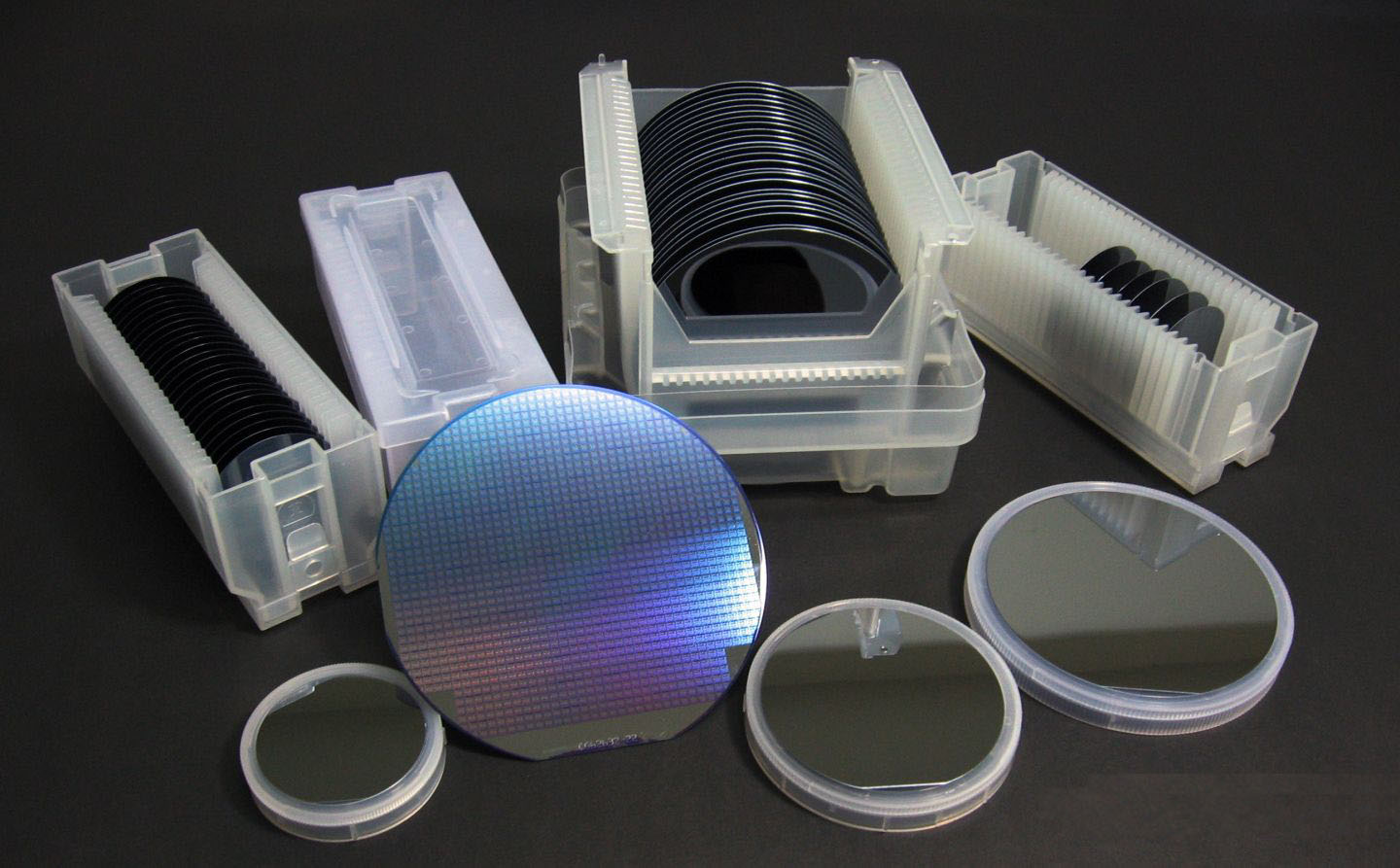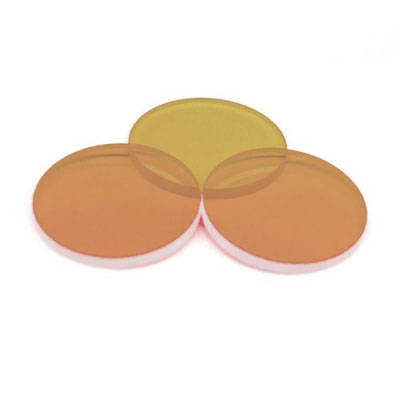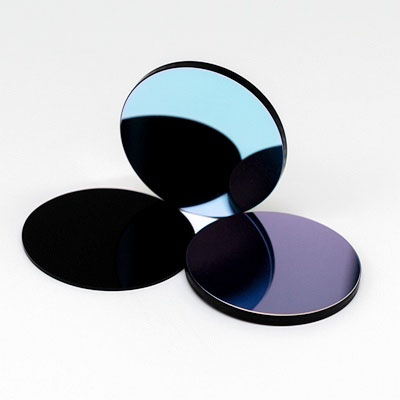Flat optical window is one of the basic optical elements in optics, and it is an optical plate that plays a role in protecting electronic components / sensors / semiconductor components in the optical path. The window sheet does not change the optical magnification and only affects the optical path in the optical path. Mechanical properties such as transmittance, surface accuracy, thickness, parallelism and base material are important parameter indexes of window sheets. Borisun options can provide high-precision window sheets of various materials, such as zinc selenide (ZnSe) window sheets, germanium (GE) window sheets, silicon (SI) window sheets, barium fluoride (BaF2) window sheets and calcium fluoride (CaF2) window sheets applied in the infrared (NIR / IR) spectral band; Fused silica window sheet applied in ultraviolet (UV) spectral band; K9 window plate used in visible light (VIS) spectral band.

1、 Window protector classification:
Ge window
Germanium material has a high refractive index (2-14 μ When used as window glass, it can be coated as required to improve the transmittance of the corresponding wavelength band. Moreover, the transmission properties of germanium are extremely sensitive to temperature changes (the transmittance decreases with the increase of temperature), so they can only be used below 100 ℃. The density of germanium (5.33 g / cm3) shall be considered in the design of the system with strict requirements on weight. The germanium window has a wide transmission range (2-16 μ m) , and opaque in the visible spectrum range, especially suitable for infrared laser applications. The Knoop hardness of germanium is 780, which is about twice the hardness of magnesium fluoride, which makes it more suitable for the application in the IR field of variable optics.
![]()
ZnSe window
Zinc selenide at 600nm-16 μ M-band has a very high transmittance, which is often used in thermal imaging, infrared imaging, and medical systems. Zinc selenide is especially suitable for high power CO2 lasers because of its low absorption rate. It should be noted that the zinc selenide material is relatively soft (Knoop hardness is 120) and easy to be scratched. It is recommended not to be used in harsh environment. Be extra careful when holding and cleaning, and apply even force when pinching or wiping. Wear gloves or rubber finger covers to prevent contamination. Do not clamp with tweezers or other tools.

Si window
Silicon is suitable for 1.2-8 μ M U.M region. Because silicon material has the characteristics of low density (its density is half of that of germanium material or zinc selenide material), it is particularly suitable for some occasions sensitive to weight requirements, especially for applications in the 3-5um band. The Knoop hardness of silicon is 1150, which is harder than germanium, and it is fragile without germanium. However, due to its strong absorption band at 9um, it is not suitable for transmission applications of carbon dioxide lasers.
Silicon (SI) single crystal is a chemically inert material with high hardness and insoluble in water It’s between 1 and 7 μ M-band has good light transmission performance, and it is in the far-infrared band 300-300 μ M also has a good light transmission property, which is the characteristic of other light infrared materials
Because monocrystalline silicon has good infrared spectral characteristics and physical properties, the infrared sensor filter mainly uses monocrystalline silicon as the substrate. By alternately plating material films with different refractive indices and thicknesses on the substrate, the substrate has the functions of long pass, short pass, band pass, antireflection and reflection. The monocrystalline silicon infrared filter produced by our company is mainly used for sensors in laser, imaging, detection, temperature measurement, sensing, aerospace and other fields, so it is also called special filter for infrared sensors.

2: Material advantages and disadvantages:
1. ZnSe (zinc selenide)
Because ZnSe has low absorption coefficient and high thermal expansion coefficient, it is usually used in high-power CO2 laser system as the base material of mirror and beam splitter. However, since ZnSe is relatively soft (Knoop hardness is 120) and easy to wipe, it is not recommended to be used in harsh environment. When holding and cleaning, pay attention to uniform force, and it is better to wear fingertips or gloves. The diameter range of ZnSe window or lens is 5 ~ 220mm, the surface accuracy can reach 20 / 10, and the surface flatness can reach: λ/ 10@633nm (the ratio of lens thickness to diameter shall conform to the processing ratio).
2. CaF2 (calcium fluoride)
Calcium fluoride has a high transmittance from ultraviolet to mid infrared (250nm ~ 7um), so it is widely used in manufacturing prisms, windows and lenses. In some applications with a wide spectrum range, it can be directly used without coating. Especially, it has small absorption and high laser threshold, and is very suitable for application in excimer laser optical systems. Calcium fluoride lens or window, diameter range: 5 ~ 150mm, surface accuracy usually up to 40 / 20, surface flatness up to: λ/ 10@633nm (the ratio of lens thickness to diameter shall conform to the processing ratio).
3. BaF2 (barium fluoride)
Barium fluoride crystal has a wide transmittance range of 0.13 μ m~14 μ M U.M wavelength range. The properties of single crystal and polycrystalline are basically the same. It is difficult for materials to produce single crystal, so the price of single crystal is 1 times that of polycrystalline. Barium fluoride crystal is an ideal material for making various optical windows, prisms and lenses. It can be used for infrared distribution cabinet window, Fourier gas analysis window, oil and gas detection, high-power laser, optical instrument, etc. Barium fluoride lens or window, diameter range: 5 ~ 150mm, surface accuracy usually up to 40 / 20, surface flatness up to: λ/ 10@633nm (the ratio of lens thickness to diameter shall conform to the processing ratio).
4. Ge (germanium)
Because GE has a high Knoop hardness, it is often used in infrared systems requiring high intensity. Because of its high refractive index, we usually plating antireflection films on Ge. The commonly used wavelength band is 3 ~ 12um or 8 ~ 12um. After Ge is heated, its transmittance will decrease with the increase of temperature. Strictly speaking, the best temperature for GE application is below 100 ° C. when it is applied to a system sensitive to weight requirements, it is suggested that the designer should consider the high density characteristics of Ge. The ratio of lens size to thickness shall meet the processing ratio, and the weight shall meet the design requirements. The diameter range of Ge lens and window is 5 ~ 260mm, the surface accuracy can reach 20 / 10, and the surface flatness can reach: λ/ 10@633nm (the ratio of lens thickness to diameter shall conform to the processing ratio).
5. Si silicon
Silicon (SI) single crystal is a chemically inert material with high hardness and insoluble in water. It has good light transmission performance in the 1.2-7um band, and it is 30-300 in the far infrared band μ M also has a good light transmission performance, which is a characteristic that other infrared materials do not have. Silicon (SI) single crystals are commonly used as 3-5 μ M U.M medium wave infrared optical window and optical filter. Because of its good thermal conductivity and low density, this material is often used in the manufacture of laser mirrors and in the places sensitive to volume and weight. The silicon lens or window adopts optical grade silicon single crystal, with a diameter range of 5-260mm, a surface accuracy of 40 / 20 and a surface flatness of: λ/ 10@633nm (the ratio of lens thickness to diameter shall conform to the processing ratio).
Attached monocrystalline silicon sheet
Single crystal silicon narrow band filter 3900nm infrared filter CWL: 3900@T >70 ~ 80%, FWHM: 90 ~ 170nm out of band: UV ~ 11 μ m@T < 1% methane detector and alarm
Single crystal silicon narrow band filter 3350nm infrared filter CWL: 3350@T >70%, FWHM: 120nm out of band: UV ~ 11 μ m@T < 1% methane (CH4) detection
Single crystal silicon narrow band filter 3470nm infrared filter CWL: 3470@T >70%, FWHM: 125nm out of band: UV ~ 11 μ m@T < 1% vehicle exhaust gas detection
Single crystal silicon narrow band filter (3570nm & 5640nm)
Infrared narrow band filter CWL: 3570@T >70%, FWHM: 125nm out of band: UV ~ 11 μ m@T <1%
CWL: 5640@T >75%, FWHM: 230nm out of band: UV ~ 11 μ m@T < 1% alcohol detection
Single crystal silicon narrow band filter 4650nm infrared narrow band filter CWL: 4650@T >75%, FWHM: 225nm out of band: UV ~ 11 μ m@T < 1% carbon monoxide (CO) detection
Single crystal silicon narrow band filter 5050nm infrared filter CWL: 5050@T >75%, FWHM: 205nm out of band: UV ~ 11 μ m@T < 1% carbon monoxide (CO) detection reference wavelength
Single crystal silicon narrow band filter 7350nm infrared filter CWL: 7350@T >75%, FWHM: 225nm out of band: UV ~ 11 μ m@T < 1% sulfur dioxide (SO2) detection
Single crystal silicon long and short wave pass filter 5um long wave pass infrared filter UV ~ 4 μ m@T <1% 5~14 μ m@T >78% body temperature detection, automatic induction equipment, infrared light switch
Single crystal silicon long and short wave pass filter 6.5um long wave pass infrared filter UV ~ 6 μ m@T <1% 7~14 μ m@T >78% body temperature detection, automatic induction equipment, infrared alarm
Single crystal silicon antireflection film 3-5 um Infrared Antireflection film 3-5 μ M U.M violates the average transmittance T > 80%, and the transmittance of the substrate with different thickness varies slightly.



